Amritsar & the Wagah Border
From Delhi we headed up north to Amritsar, the furthest north we will get in India. Jami was the star of the train as dozens of Indian schoolgirls on a school trip loved talking to her about the US and seeing which pop singers she knew.
There are two highlights in Amritsar, both of which we liked: the Golden Temple and the Wagah Border Ceremony. Although outside of those two attractions Amritsar was not noticeably different from other Indian cities, we were surprised at the lack of tourists in the city, given the two attractions.
The Golden Temple
The Golden Temple is the holiest location for Sikhs. Having already struggled at learning the basics on Hindu gods, it was a little difficult to try and quickly learn about another religion, but we did our best. Like other temples in India, we had to cover up – I wore a head covering (after finding out that hats didn’t count), and Jami a scarf. Everyone must take off their shoes and wade through a small pool of water to clean their feet when entering.
Our time was made much easier and more rewarding because a young Sikh started talking to us and took it upon himself to explain the history of the temple, the Sikhs in general, and why he found it so inspiring.
The Golden Temple itself is only a small part of the entire complex. It sits in the middle of a holy water tank. The water is holy to Sikhs, and pilgrims bathed in it and splashed the water on themselves.
Pilgrims circumvented the tank, but also just hung out. Many families appeared to be spending the entire day at the temple, and would lounge around on the wide marble walkway around the tank. Music was performed at certain parts, and loudspeakers broadcast a reading of Sikh holy books continuously.
The center of the action, however, is the Golden Temple itself. It sits, shimmering in the water, surrounded by white buildings that make the gold color that much more spectacular.
Connected to the temple complex by a long causeway, it took over 45 minutes to wait in the line to get in. Inside, a number of religious men were seated in the center, chanting, while devotees prayed and donated money. Upstairs, overlooking the chanting, was more relaxed, with people sitting, reading holy books, and praying. Our friend invited us to just sit and relax.
As with the Hindu and Buddhist temples we’ve visited on our trip, I was amazed at how different the holy atmosphere was compared to the Judeo-Christian houses of worship more common in the US. The atmosphere felt more freeing, with families and individuals just hanging out.
One of the most unique aspects of the Golden Temple is that they serve free food to anyone and everyone, without any limitations on religion or repeat customers. Our guidebook recommended we experience it, and we are glad we did, as it is unlike any other eating experience we’ve had on our trip.
Our friend explained that the experience was meant to underscore the equality of all individuals, and egalitarian is probably the best way to describe the meal. That, and a cross between a grown-up camp cafeteria and how an uber-efficient organization might serve food. Everything was on a large scale – the room sat about 300 people, and people were constantly leaving and being ushered in. You walked into the room in a line, and were sat in a neat rows, much like parking at a ski resort. The rows formed a line that snaked through the entire room. The room was big enough for people to be continually leaving and entering, and so the line itself never stopped moving.
On the way in we received a plate, cup, and silverware. Once sat, people went down the line and gave us water, chapati, porridge, and lentils. Serving was quick and efficient – a rolling container with a perfectly-placed spout for water, and a quick chapati server who would quickly go by you unless you hand your hands out, indicating you wanted another piece. Almost Soup Nazi-esque, except everyone was friendly and smiling. Luckily, we had friendly people around us who were happy to show us how things were done.
Eating on the floor, sitting in close quarters with whomever randomly was in front and behind us in line, was definitely an egalitarian experience, and from the floor it was impossible to know who around me was rich or poor. The food, while not spectacular, was also quite good for being free and served to thousands of people daily.
At the end of the people, people slowly got up and we got the hint to clear as the line of people being sat came ever closer to us. After our row was all clear, the carpet we sat on was rolled up, the floor moped, and a new carpet rolled down just in time for the snaking line to arrive back at our row, and people were again sat and served. Very efficient.
Just as efficient and massive was the washing and cooking operation, which used huge stainless steel equipment covering almost as large an area as the eating room. Bowls with thousands of onions and sinks with massive capacities were everywhere. We were never asked to help, but were later told it was customary to help wash dishes to keep the process free.
While we, as Westerners, have attracted some attention in most parts of India (we’ve been shocked at how few other Western tourists we’ve seen, apart from at the Taj Mahal), we had tons of requests for pictures and conversations while at the Golden Temple. And while usually it’s the boys asking for Jami’s picture, I even had some requests from some girls – it must be the beard, which has gotten a ton of comments (uncut hair being an article of faith for Sikh men).
The Wagah Border
The second big attraction in Amritsar is the Wagah Border Ceremony, which is at the Pakistan border, about an hour west of Amritsar. We had read repeatedly that we should go to the ceremony, but still didn’t know quite what to expect. The best way I can explain it is a cross between (a) a changing of the guard ceremony; (b) a huge soccer match between rivals; and (c) a political rally where the opposition has set up a nearby counter-rally. I’ll try to explain.
The Wagah border itself is on a road between India and Pakistan. For obvious reasons, the border is heavily guarded and not friendly. Each side has its own fence, a few feet from the other, with its own gates, guards, and security equipment. Each has obviously tried to outdo the other, which gave the appearance of a petty sibling rivalry. At the dueling gates, both countries have flagpoles, and both countries perform ceremonies with outdated British-era uniforms to lower the flags each night. Given that they are each trying to one-up the other, the ceremonies have become fun to watch and attract a large number of spectators.
The countries encourage the spectators. Huge amphitheaters are set up on both sites, facing the border gates. They are decorated patriotically, with huge portraits of Gandhi on the India side and huge Islamic symbols on the Pakistan side. The crowds are enthusiastically patriotic, shouting national slogans and songs, and waving large flags. This behavior is actively encourage by the authorities. We had less of a view into Pakistan’s setup, but India had numerous speakers set up, and an MC who would shout pro-India messages and encourage the crowd to get louder. The crowds seemed to want to one-up each other as well – India would break out in Bollywood hits, while Pakistan would respond with loud cries of “Allah Akbar”.
For me one of the starkest distinctions between the two sides was the happy dancing Indian schoolgirls on our side, while the Pakistan side was gender-segregated and sedate.
All of this was just to pump up the respective sides for the main event. Both sides had about 5 or 6 border guards in ridiculous uniforms who performed the ceremony.
Each used trumpet horns to keep their timing, and also to let the other side know where they were. As a result, even though there was “no communication” between the sides, everything happened on both sides at the same time. The gates were opened; the guards were lined up; the flags were lowered; and then the gates shut.
The entire process consisted of a lot of high-marching (which was actually pretty impressive, as their boots would go over their heads and hit their hats) and threatening gestures towards the other side.
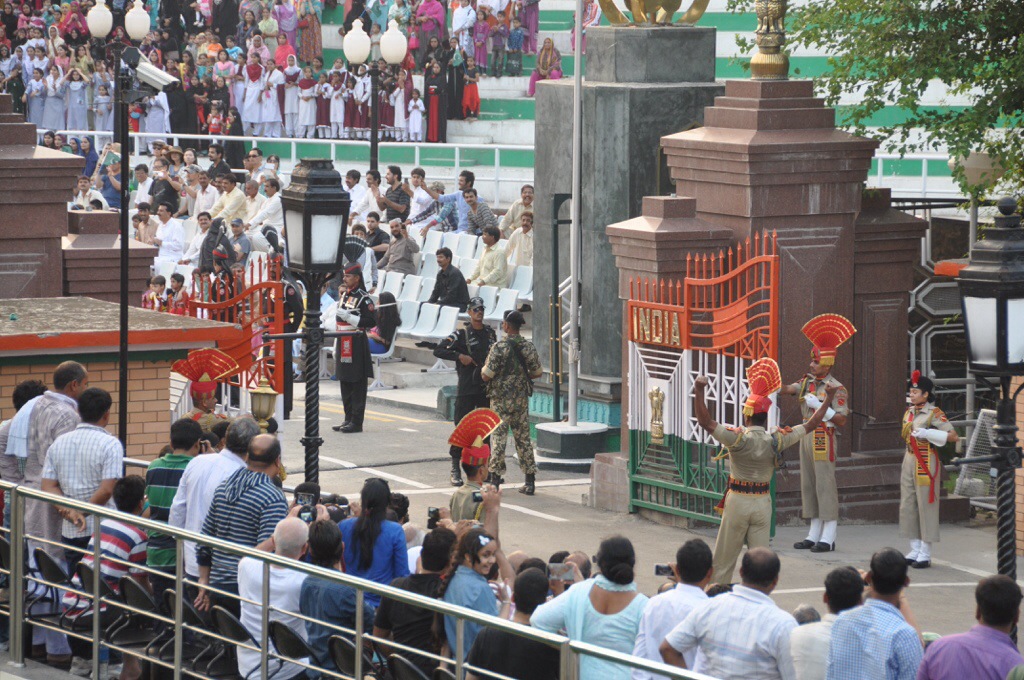
An Indian border guard gesturing towards Pakistan as part of the ceremony. (Notice the two heavily-armed guards standing face-to-face with each other at the actual border line.)
It was the threatening gestures, and the crowd’s relishing of them, that made me the most uncomfortable. The patriotic cheering and insulting gestures to the other country would be common at any important international soccer game between rivals. But having them between the border police of each side – with large guns close at hand – while the crowded cheered was different. There was not only institutional hated towards the other side, but the citizens of each country appeared to support the hatred. While perhaps understandable given the history between India and Pakistan, it left no doubt in my mind that the resentment and conflict between the two countries is unlikely to end soon.
But even the gestures and nationalism of both sides were in tune with each other – they sang the same type of songs and chants at the same time, and I noticed that it seemed like the MCs of each side would alternate speaking, perhaps to avoid talking over the other.
Even with the (somewhat) coordinated nature of the event, there was never any doubt that this was still a border between two enemy countries. One row above us stood a heavily armed guard with a rifle and high-tech headset, always staring at the border. When I stood up to get a better view he was quick to tell me to sit down in order to maintain his light of sight (and, I assume, his shot).
Very interesting, very entertaining, and definitely recommended for visitors to Amritsar.
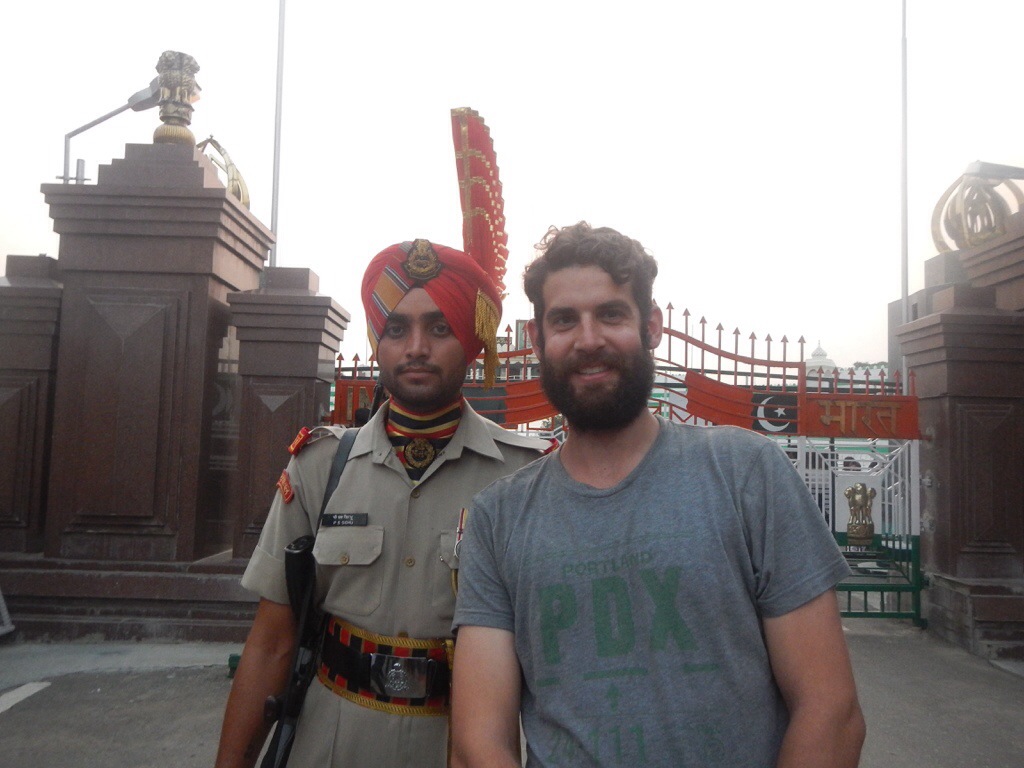
With a border guard next to the border gates after the ceremony – probably the closest I’ll ever get to Pakistan!
Mandir Mata Lal Devi
Our most unexpected experience in Amriisar was the Mandir Mata Lal Devi, which we hadn’t been expecting to visit but were advised to by our hotel. It’s a Hindu temple dedicated to a local saint. But for reasons we couldn’t figure out, the temple contains a funhouse-type maze through caves, animals, and mirrored hallways, all lined with statues of gods, animals, and other objects. It was thoroughly bizarre.
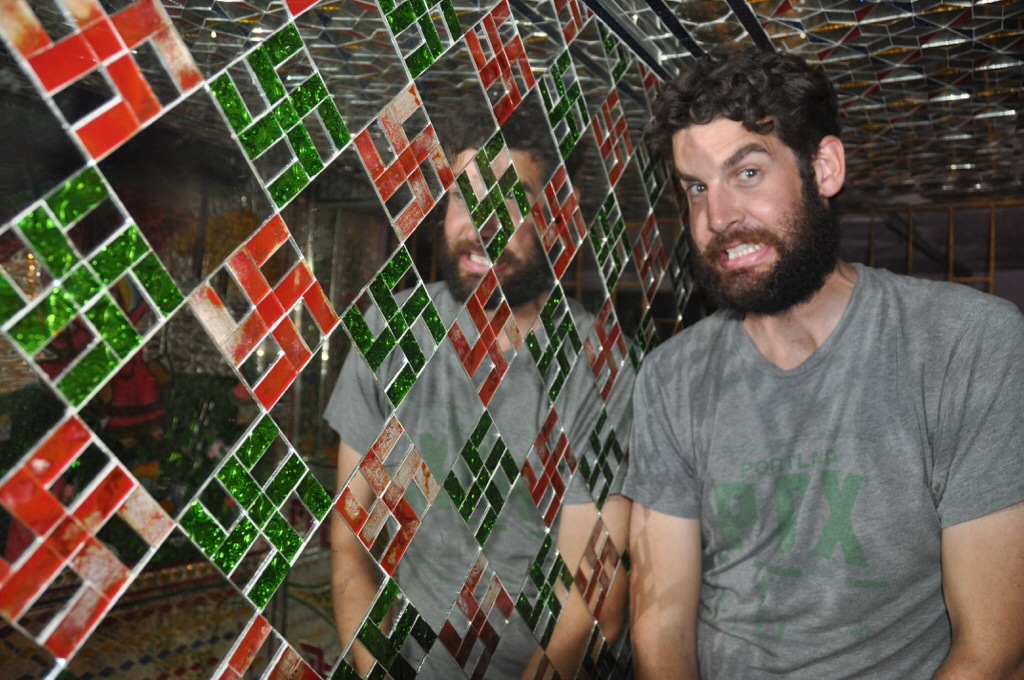
While I’ve come to terms with the fact that India’s uses of the swastika and six-pointed star are different from their meanings in western countries, the wall of mirrored swastikas in the temple was very scary to see.


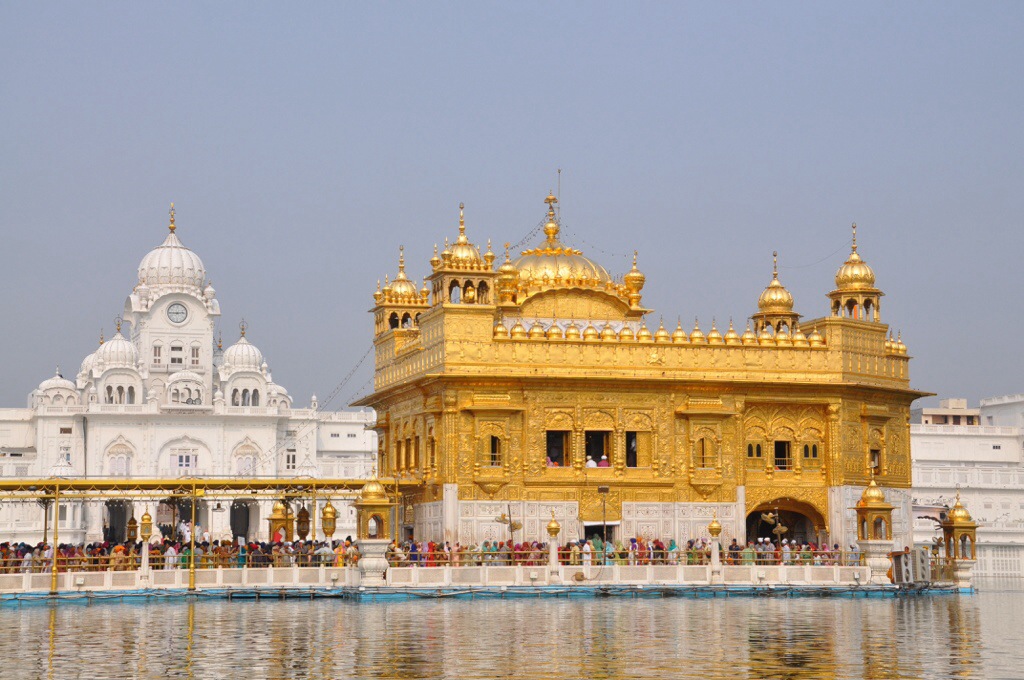


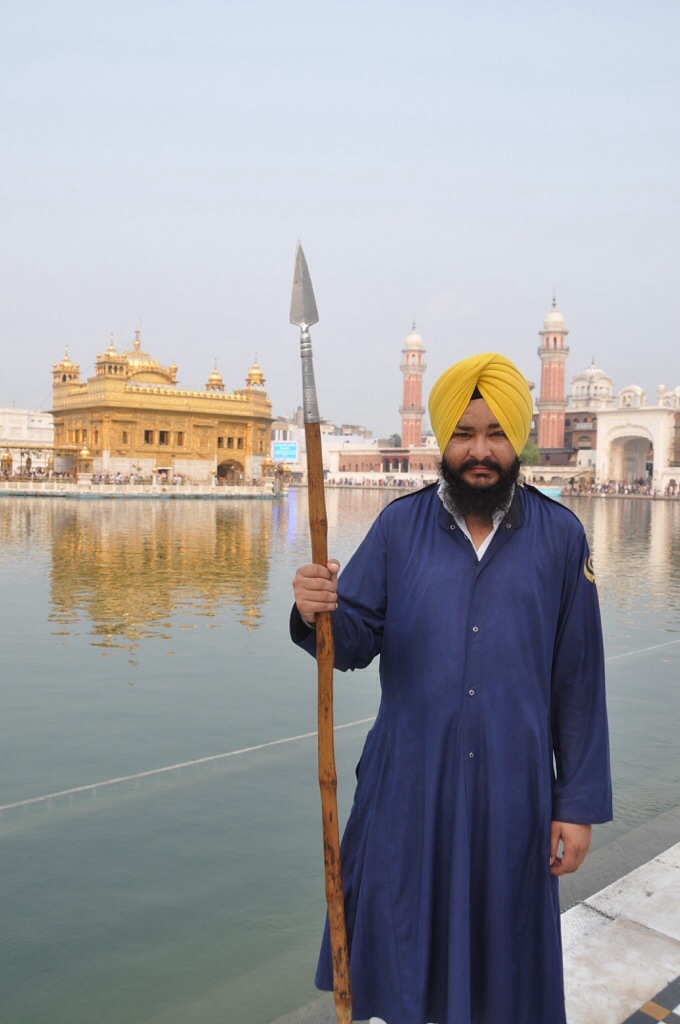
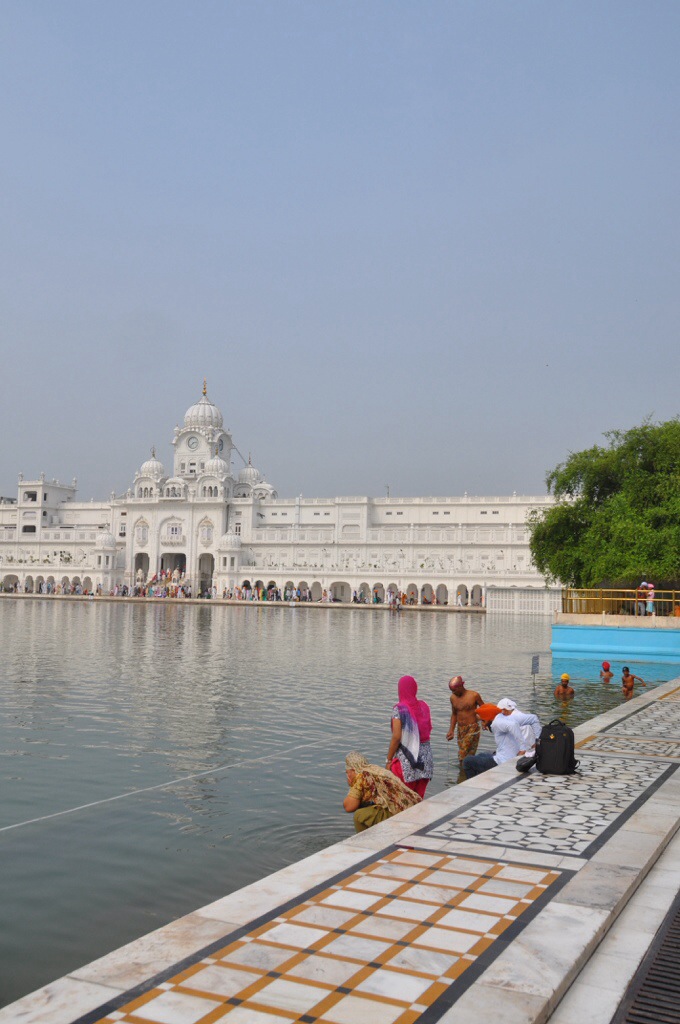
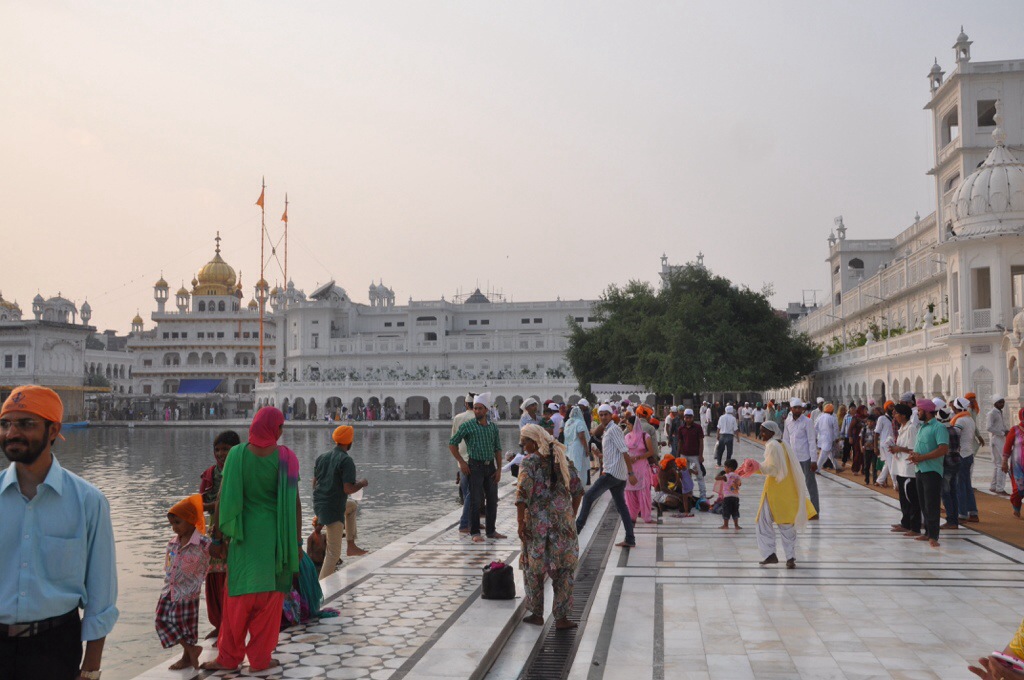

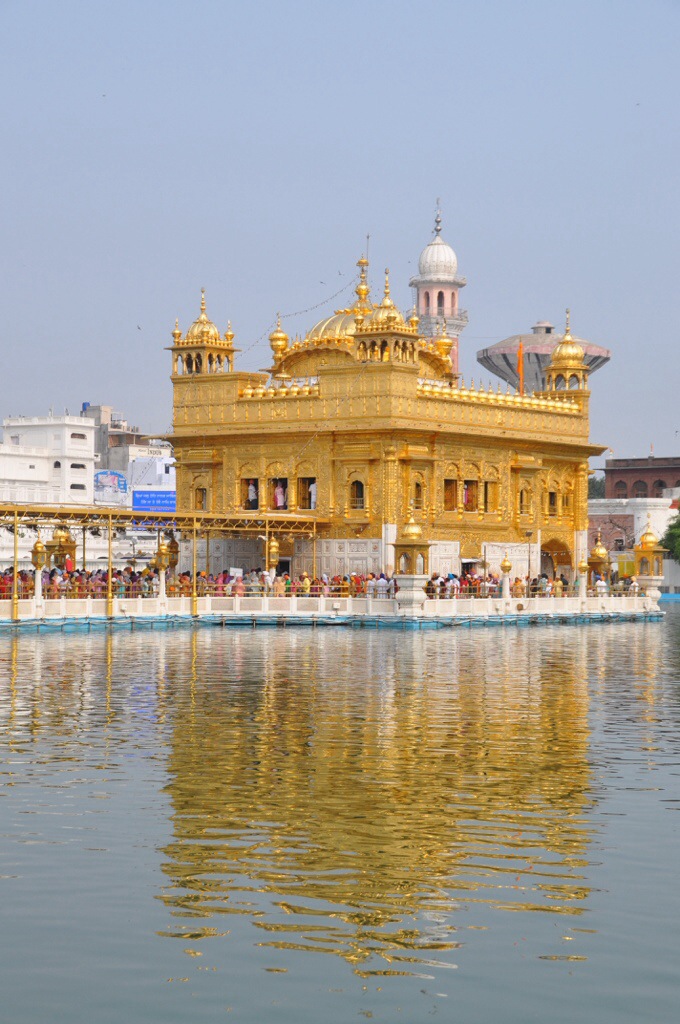

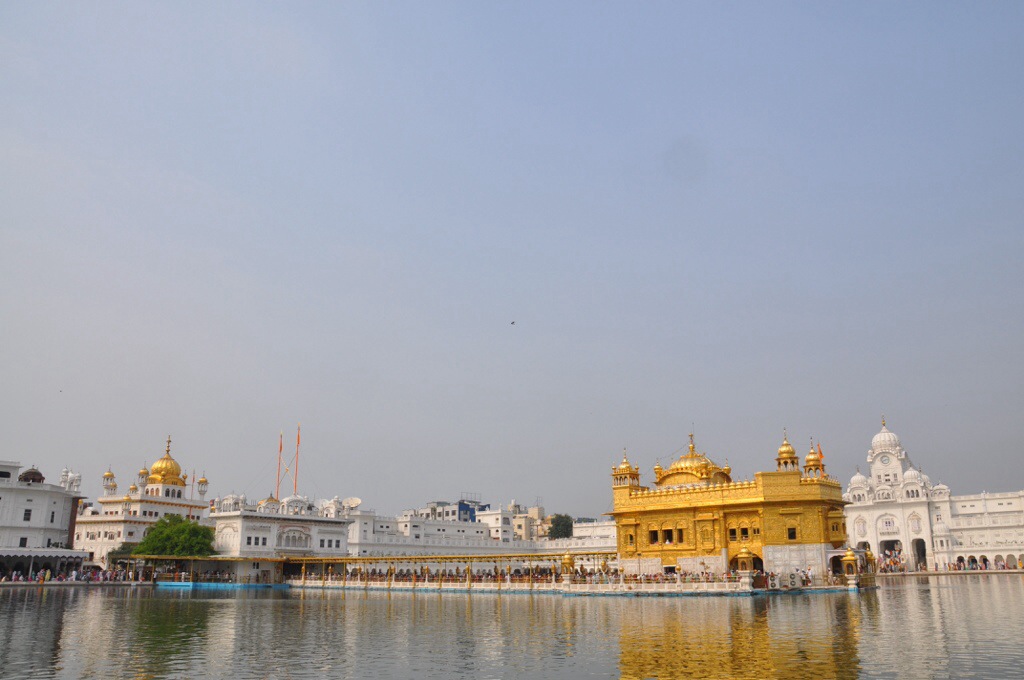
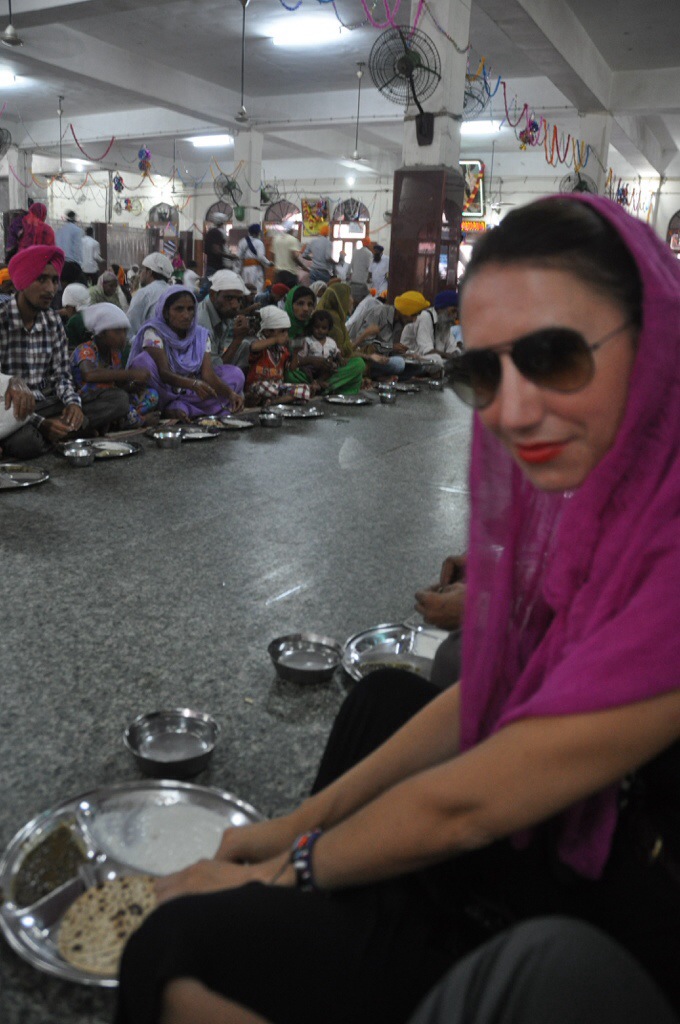

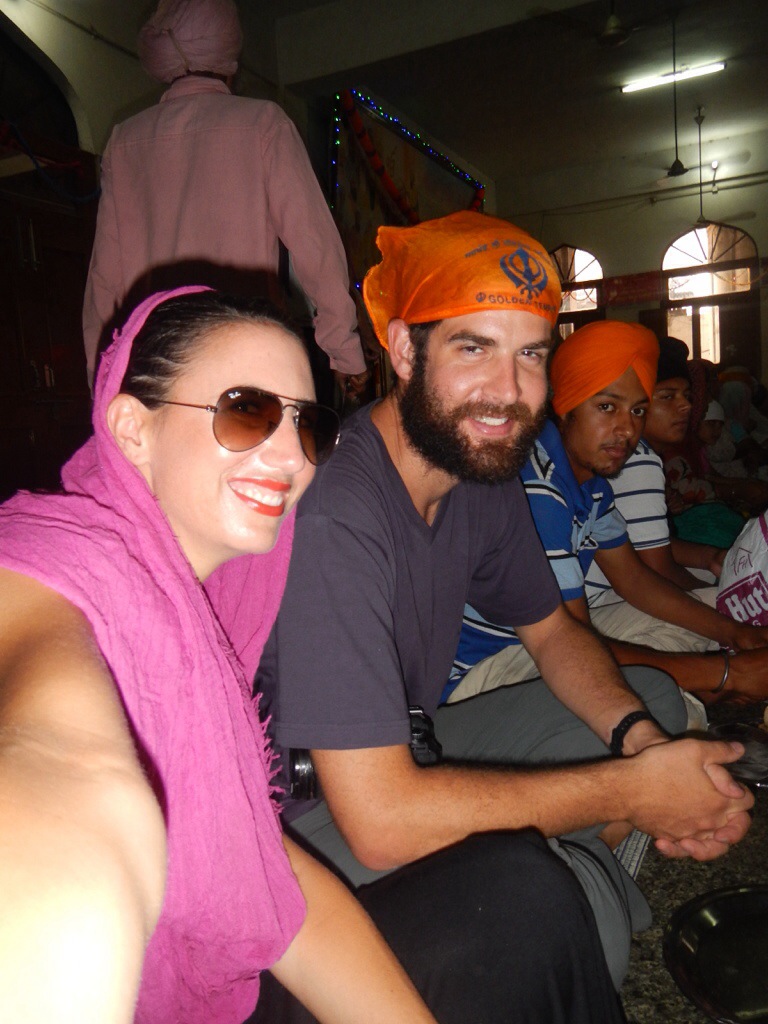




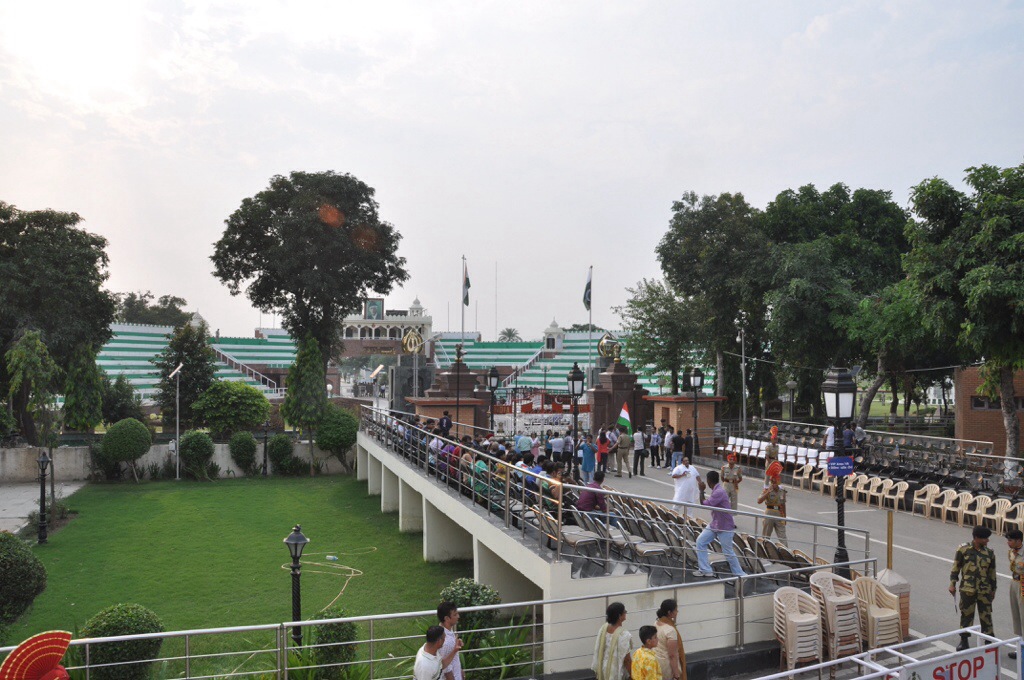
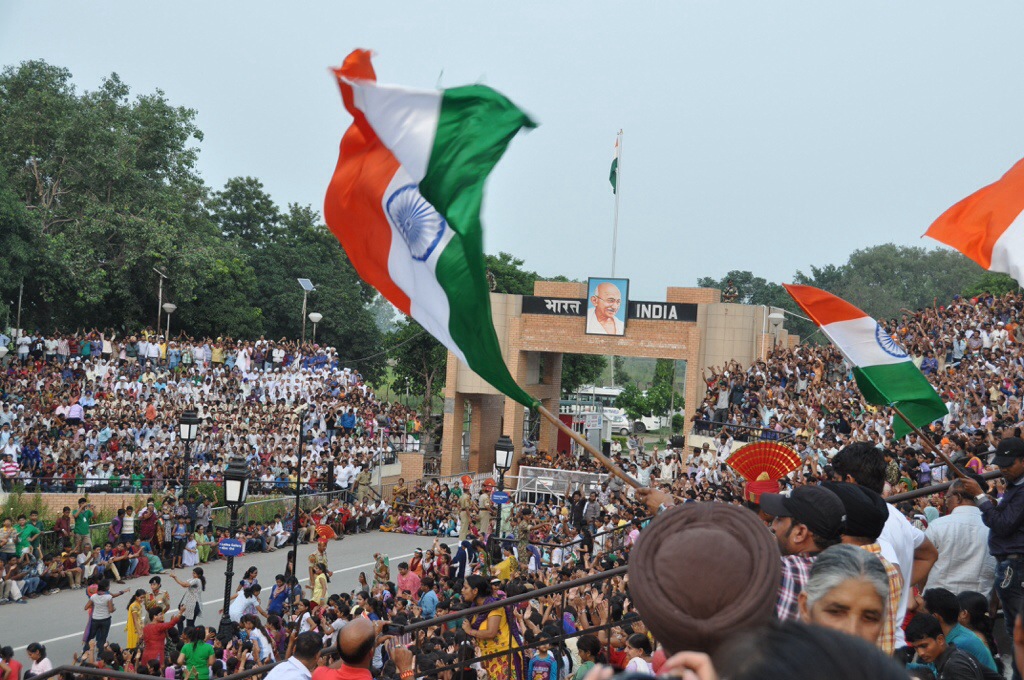
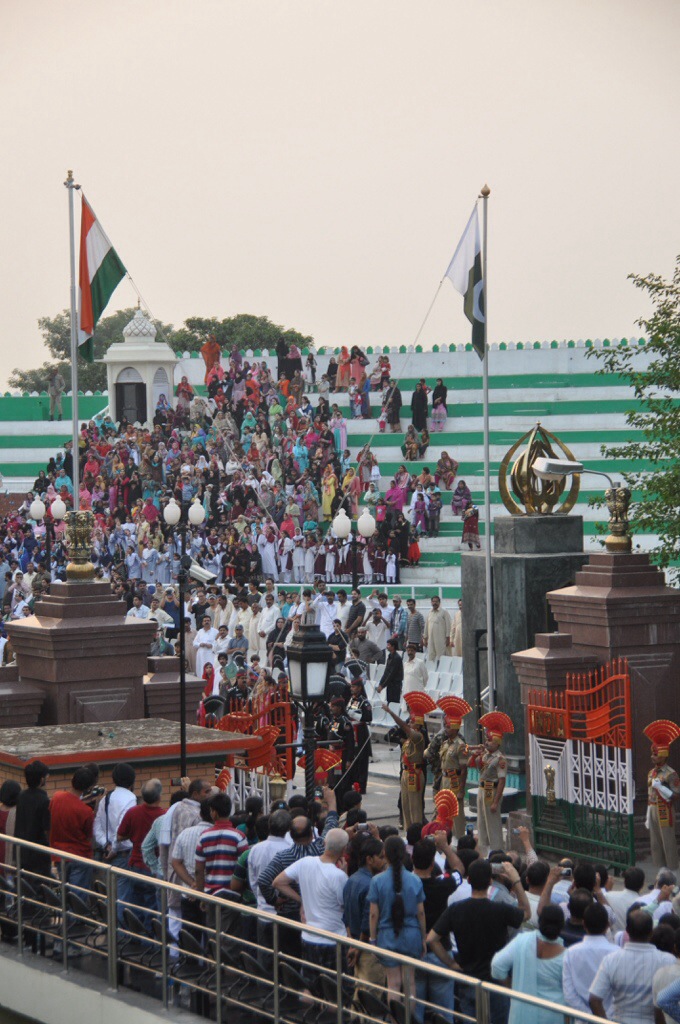

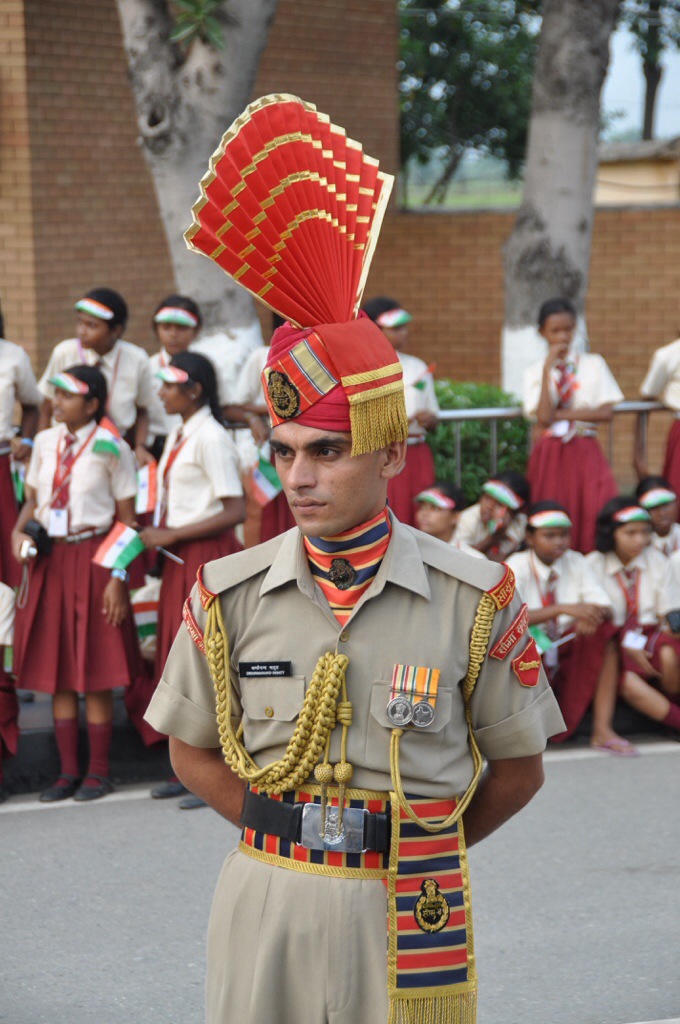
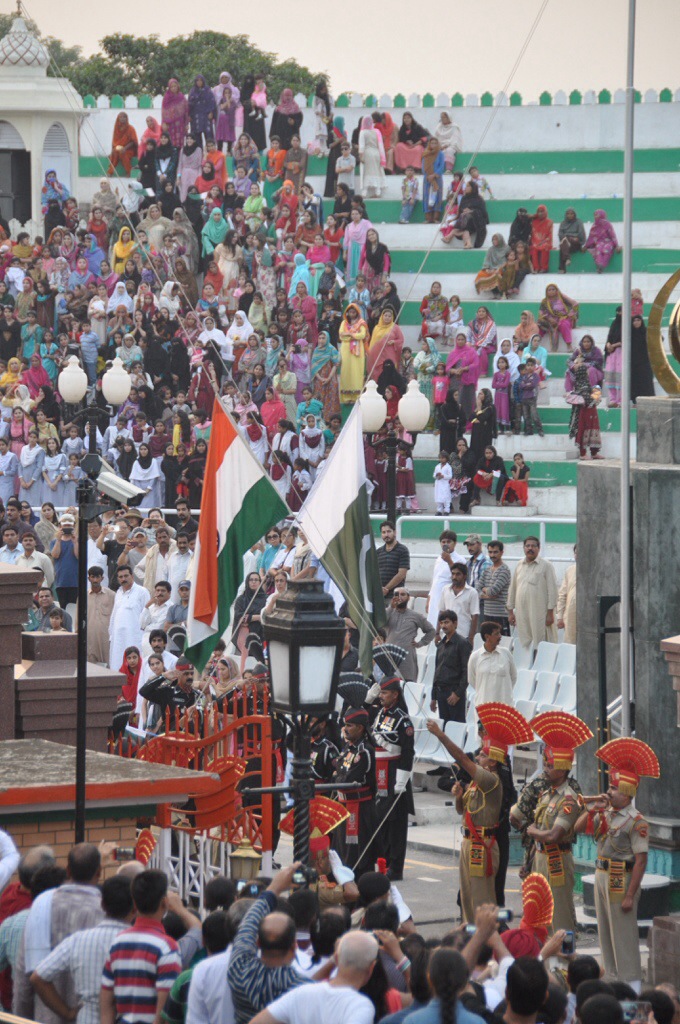
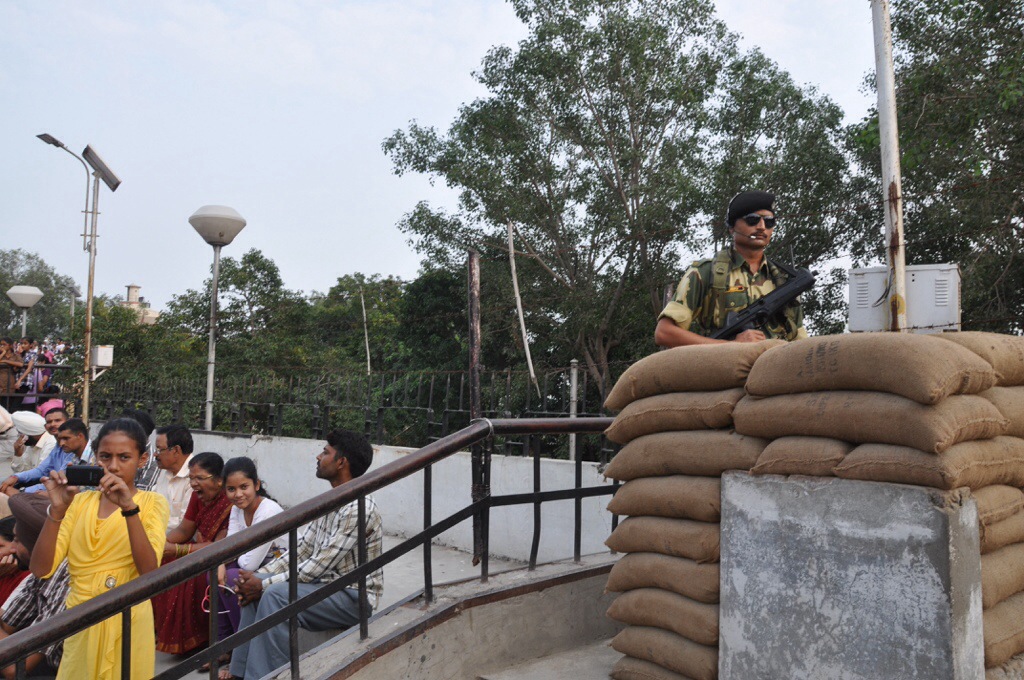


This is my favorite entry of the blog thus far. So jealous that you got to see the ceremony–it’s on my bucket list.
Thanks – the ceremony was definitely quite an experience. Supposedly you’re able to see the state of India/Pakistan relations through the state of the ceremony, but not having seen it before we weren’t sure if the hate we saw was “more hate” or “less hate” than normal.
I love the colourful the photos in this installment. Also impressed that you guys manage to look so put together despite being on the road for so long. Love Jami’s lipstick in the pani puri and Golden Temple snaps!
Thanks!
^ omit the second “the”
OMG, I can’t tell you how much I enjoyed this post!! An amazing set of experiences….. Did the high-marchers touch their heads with their knees? Toes?
Their boots. The toes would go through the ruffles of the hat.